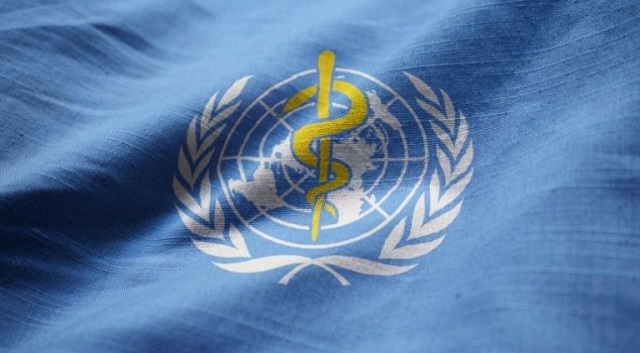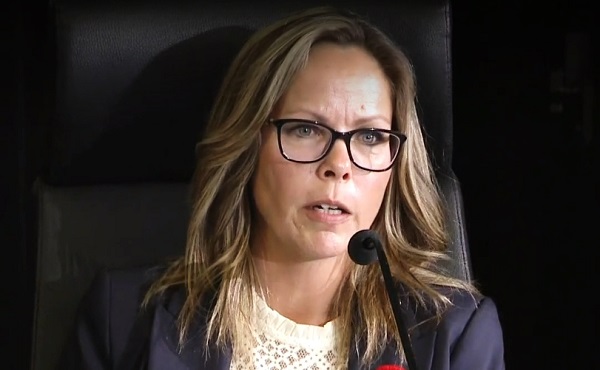COVID-19
WHO health treaty a convenient cover for more government overreach: Bruce Pardy

From the MacDonald Laurier Institute
By Bruce Pardy
The updated regulations will transform the WHO from an advisory body to the directing mind and will of global health.
Last September, the CBC ran a hit piece on Conservative MP Leslyn Lewis after she warned that a new international pandemic treaty could undermine Canadian sovereignty over public health.
Catherine Cullen, the CBC journalist, quoted three academics to debunk Lewis’ claims. It’s nonsense, said Stephen Hoffman of York University. “So far from the truth that it’s actually hard to know where to begin,” said Kelley Lee of Simon Fraser University. It’s fearmongering, said Timothy Caulfield of the University of Alberta, as no treaty can suspend the Canadian Constitution. That last part is correct, but Lewis is right to be concerned. Under the guise of international cooperation, governments are devising a cover to enact even tougher public health restrictions next time a crisis is declared.
The World Health Organization (WHO) is drafting a new pandemic agreement and amendments to the International Health Regulations, which since 2005 have set out countries’ obligations for managing the international spread of disease. Member countries of the World Health Assembly are expected to approve both in May. The agreement would establish governing principles for an international pandemic management regime, and the updated regulations will transform the WHO from an advisory body to the directing mind and will of global health.
Technocrats learned a lot from COVID. Not how to avoid policy mistakes, but how to exercise control. Public authorities discovered that they could tell people what to do. They locked people down, closed their businesses, made them wear masks and herded them to vaccination clinics. In Canada and elsewhere, people endured the most extreme restrictions on civil liberties in peacetime history. If the new proposals are anything to go by, next time may be worse.
Under the new health regulations, the WHO will have the authority to declare public health emergencies. Countries will “undertake to follow WHO’s recommendations.” WHO measures “shall be initiated and completed without delay by all State Parties … (who) shall also take measures to ensure Non-State Actors operating in their respective territories comply with such measures.”
In other words, governments will promise to do as the WHO directs. They will make private citizens and domestic businesses comply too. Lockdowns, quarantine, vaccines, surveillance, travel restrictions and more will be on the table. Under the draft agreement, countries would commit to censoring “false, misleading, misinformation or disinformation.” During COVID, despite governments’ best efforts, dissidents managed to seed doubts about the mainstream pandemic narrative. In the future, things may be different.
WHO officials and proponents of the proposals won’t admit to any of this out loud, of course, and you won’t hear much about these plans in the mainstream press. But the draft proposals, at least the ones released, say so in black and white.
Many national governments will be on board with the plan. That may seem counterintuitive since it appears to diminish their control, but more valuable to them is the cover that WHO directives will provide for their own heavy hands. Officials will be able to justify restrictions by citing international obligations. Binding WHO recommendations leave them no choice, they will say. “The WHO has called for lockdowns, so we must order you to stay in your home. Sorry, but it’s not our call.”
That sounds like a loss of sovereignty, but it is not. Sovereign states have exclusive jurisdiction in their own territory. WHO directives would not be directly enforceable in Canadian courts. But national governments can agree to follow the authority of international organizations. They can craft domestic laws accordingly. That too is an exercise of sovereignty. They can undertake to tie their own hands.
Provinces might decide to go along also. Provinces have jurisdiction over many orders that the WHO might recommend. Lockdowns, vaccine mandates, quarantine orders and other public health restrictions are primarily provincial matters. The feds control air travel, international borders, the military, drug approvals and the federal workforce. The federal government’s power to make treaties cannot oust provincial legislative jurisdiction, but WHO cover for restrictive measures would appeal to provinces as well.
The WHO cannot suspend the Constitution. International norms, however, can influence how courts read constitutional provisions, and the meaning of the Constitution is fluid, as our Supreme Court is fond of insisting. If norms change, so might the court’s interpretation of the Charter of Rights and Freedoms. The WHO’s proposals can’t define Canadian constitutional rights, but they aren’t irrelevant either.
Proponents would deny that the WHO is seizing control or undermining democracy. Technically they are correct. National governments must approve the new international pandemic plan. Without their agreement, the WHO has no power to impose its dictates. And not all countries may be keen on all the details. The WHO proposals call for massive financial and technical transfers to developing countries. But climate change pacts do too, and these were embraced by rich countries, unable to resist the virtue signaling and validation of their own climate boondoggles.
States that sign on to the WHO proposals retain the sovereignty to change their minds, but leaving international regimes can be hellishly difficult. When the United Kingdom belonged to the European Union, it agreed to be subject to EU rules on all manner of things. It remained a sovereign country and could decide to get out from under the EU’s thumb. Brexit threatened to tear the country apart. Having the legal authority to withdraw does not mean that a country is politically able to do so. Or that its elites are willing, even if that’s what its people want.
The WHO proposals prescribe authority without accountability, but they do not eliminate sovereignty. Instead, national governments are in on the game. When your own government aims to manage you, national sovereignty is no protection anyway.
Bruce Pardy is executive director of Rights Probe, professor of law at Queen’s University and senior fellow at the Macdonald-Laurier Institute.
COVID-19
Crown still working to put Lich and Barber in jail

From LifeSiteNews
The Crown’s appeal claims the judge made a mistake in her verdict on the intimidation charges, and also in how she treated aggravating and mitigating factors regarding sentencing.
Government lawyers for the Crown have filed an appeal the acquittals of Freedom Convoy leaders Tamara Lich and Chris Barber on intimidation charges.
The Crown also wants their recent 18-month conditional sentence on mischief charges replaced with harsher penalties, which could include possible jail time.
According to the Justice Centre for Constitutional Freedoms (JCCF), it is “asking the Ontario Court of Appeal to enter a conviction on the intimidation charge or order a new trial on that count,” for Barber’s charges.
Specifically, the Crown’s appeal claims that the judge made a mistake in her verdict on the intimidation charges, and also in how she treated aggravating and mitigating factors regarding sentencing.
As reported by LifeSiteNews, both Lich and Barber have filed appeals of their own against their house arrest sentences, arguing that the trial judge did not correctly apply the law on their mischief charges.
Barber’s lawyer, Diane Magas, said that her client “relied in good faith on police and court direction during the protest. The principles of fairness and justice require that citizens not be punished for following the advice of authorities. We look forward to presenting our arguments before the Court.”
On October 7, Ontario Court Justice Heather Perkins-McVey sentenced Lich and Chris Barber to 18 months’ house arrest after being convicted earlier in the year of “mischief.”
Lich was given 18 months less time already spent in custody, amounting to 15 1/2 months.
Lich and Barber were declared guilty of mischief for their roles as leaders of the protest against COVID mandates in April 2022, and as social media influencers. The conviction came after a nearly two-year trial despite the non-violent nature of the popular movement.
The Lich and Barber trial concluded in September 2024, more than a year after it began. It was originally scheduled to last 16 days.
As reported by LifeSiteNews, the Canadian government was hoping to put Lich in jail for no less than seven years and Barber for eight years.
LifeSiteNews recently reported that Lich detailed her restrictive house arrest conditions, revealing she is “not” able to leave her house or even pick up her grandchildren from school without permission from the state.
As reported by LifeSiteNews, Lich, reflecting on her recent house arrest verdict, said she has no “remorse” and will not “apologize” for leading a movement that demanded an end to all COVID mandates.
COVID-19
Freedom Convoy leader Tamara Lich to appeal her recent conviction

From LifeSiteNews
Lawyers will argue that there is no evidence linking Tamara Lich ‘to the misdeeds of others.’
Freedom Convoy leader Tamara Lich said she will appeal her recent mischief conviction in an Ontario court, with her lawyers saying “there was no evidence linking her to the misdeeds of others.”
In a press release late yesterday, Lich’s legal team, headed by Lawrence Greenspon, Eric Granger, and Hannah Drennan, made the announcement.
“Lawyers for Tamara Lich filed Notice of Appeal in the Ontario Court of Appeal of the conviction for mischief arising out of the Freedom Convoy,” the release stated.
Lich’s legal team noted that there are two reasons for the principal grounds of appeal.
“While there was substantial evidence that Tamara encouraged the protesters to be peaceful, lawful and safe, there was no evidence linking her to the misdeeds of others,” they said.
The second reason for the appeal, according to Lich’s lawyers, is that the “trial judge failed to give effect to the principle that communication that would otherwise be mischief is protected by section 2(b) of the Charter, freedom of expression.”
On October 7, Ontario Court Justice Heather Perkins-McVey sentenced Lich and Chris Barber to 18 months’ house arrest after being convicted earlier in the year of “mischief.”
Lich was given 18 months less time already spent in custody, amounting to 15 1/2 months.
As reported by LifeSiteNews, the Canadian government was hoping to put Lich in jail for no less than seven years and Barber for eight years for their roles in the 2022 protests against COVID mandates.
Interestingly, Perkins-McVey said about Lich and Barber during the sentencing, “They came with the noblest of intent and did not advocate for violence.”
As reported by LifeSiteNews, Lich, reflecting on her recent sentencing of over a year’s house arrest for her role in the 2022 Freedom Convoy, laid bare the fact that when all is said in done, seven years of her life will have been spent in a government-imposed “lockdown” in one form or another.
LifeSiteNews recently reported that Lich detailed her restrictive house arrest conditions, revealing she is “not” able to leave her house or even pick up her grandkids from school without permission from the state.
As reported by LifeSiteNews, Lich, reflecting on her recent house arrest verdict, said she has no “remorse” and will not “apologize” for leading a movement that demanded an end to all COVID mandates.
-

 Agriculture14 hours ago
Agriculture14 hours agoBovaer Backlash Update: Danish Farmers Get Green Light to Opt Out as UK Arla Trial Abruptly Ends!
-

 Business2 days ago
Business2 days agoCBC cashes in on Carney as the news industry playing field tilts further in its favour, crippling the competition
-

 Business19 hours ago
Business19 hours agoCarney’s Floor-Crossing Campaign. A Media-Staged Bid for Majority Rule That Erodes Democracy While Beijing Hovers
-

 Daily Caller1 day ago
Daily Caller1 day agoMcKinsey outlook for 2025 sharply adjusts prior projections, predicting fossil fuels will dominate well after 2050
-

 Agriculture1 day ago
Agriculture1 day agoFarmers Take The Hit While Biofuel Companies Cash In
-

 Business1 day ago
Business1 day agoTrump: Americans to receive $2,000 each from tariff revenue
-

 armed forces15 hours ago
armed forces15 hours agoIt’s time for Canada to remember, the heroes of Kapyong
-

 Agriculture2 days ago
Agriculture2 days agoWas The Ostrich “Cull” A Criminal Act?


